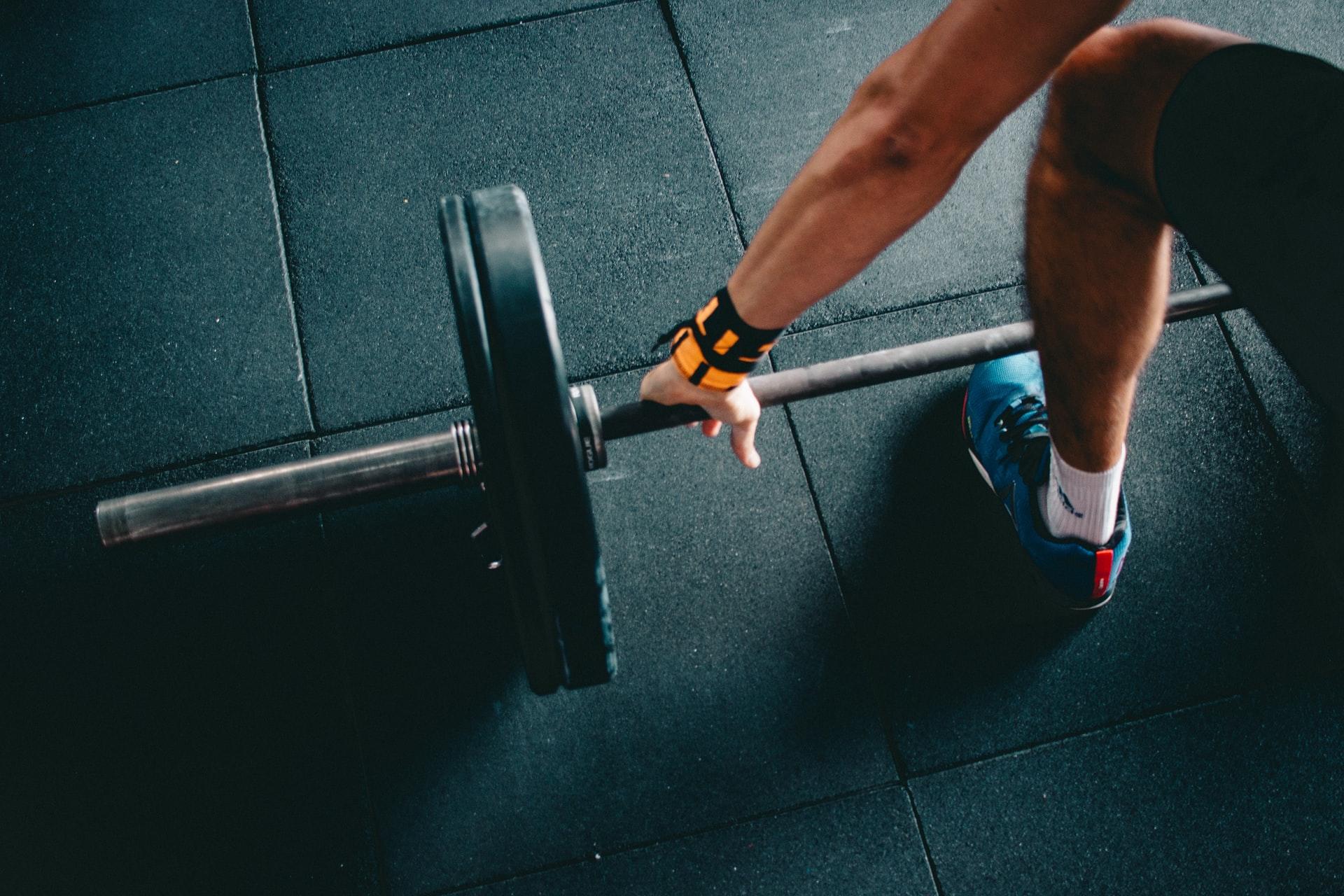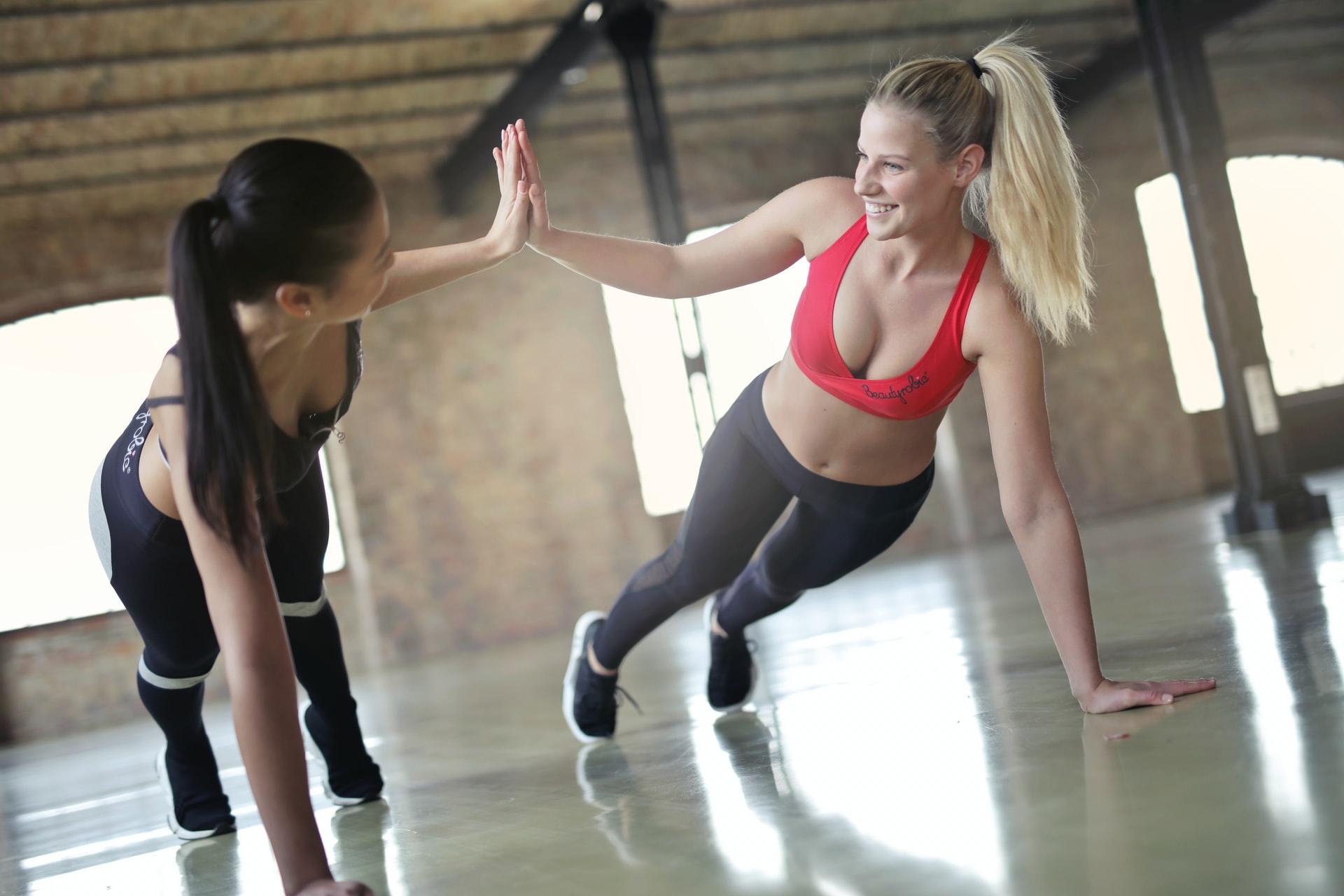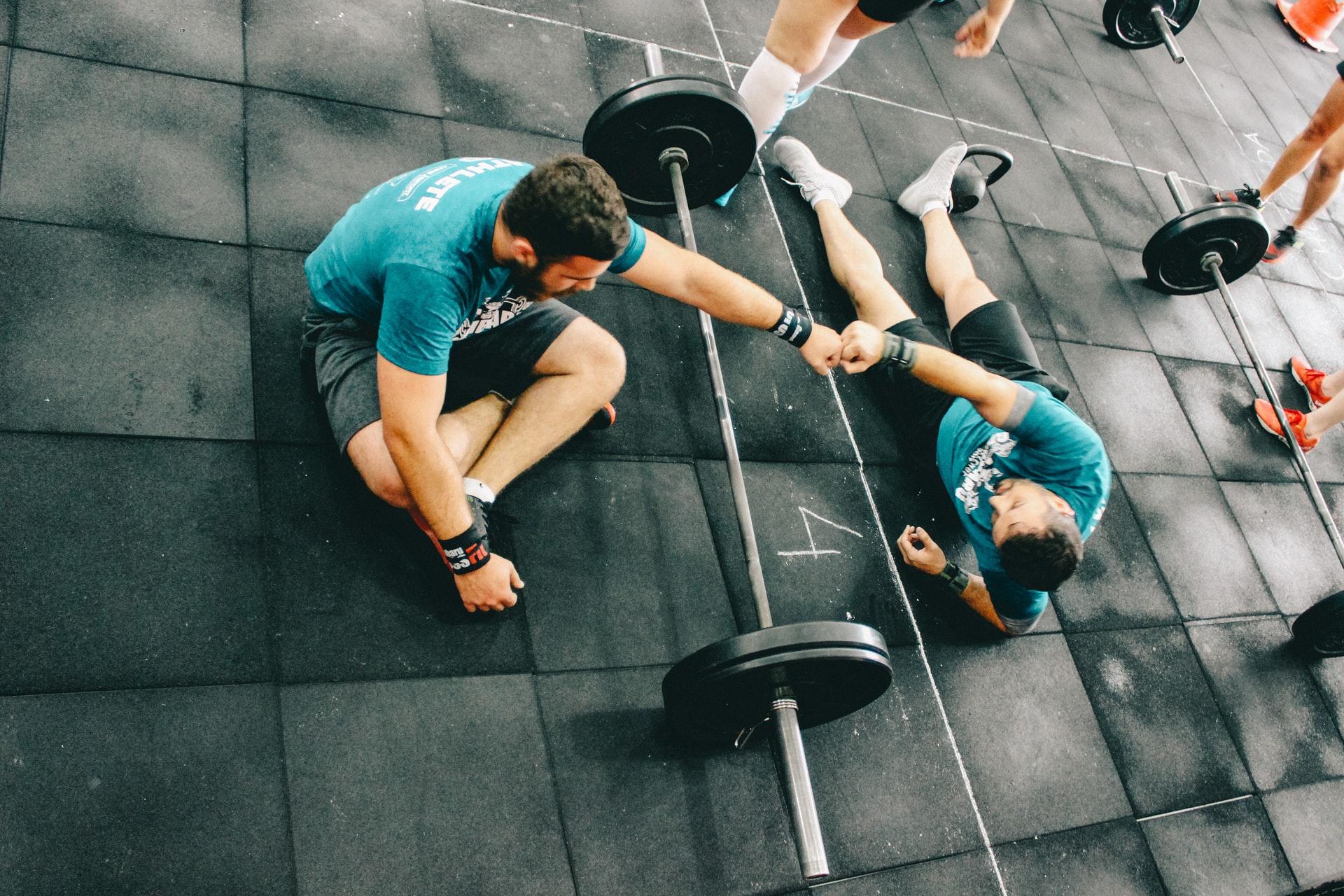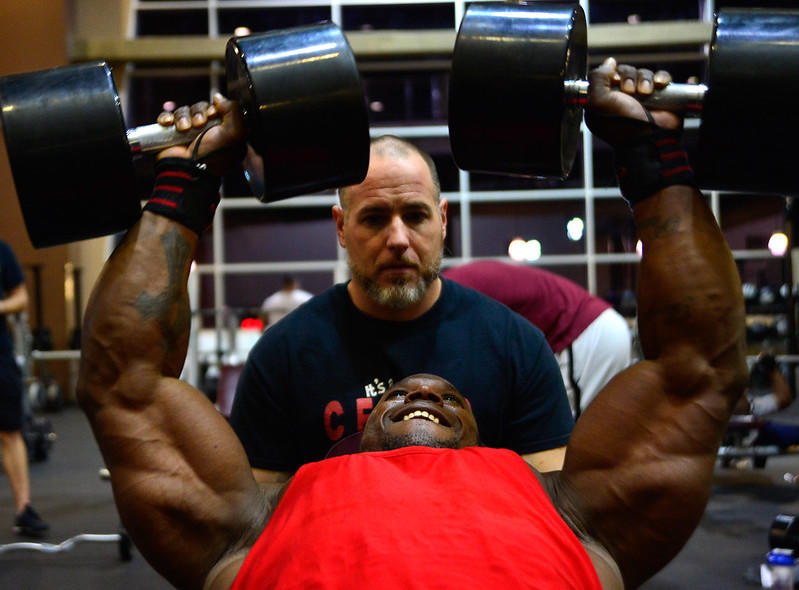Sports are in the news a lot. So much so that news broadcasts reserve a segment of their programme for discussing sports. Print/online news outlets don't shy away from the subject, either. They too dedicate entire web pages to statistics, commentary and human interest stories from the world of sports.
But the impact of athleticism goes far beyond reporting on a few scores in a handful of sports, and even beyond individual stories of select athletes.
We care about scandals revolving around athletes' training - from the strict, nearly abusive regimentation of competitive athletes in the Soviet days to the likes of Larry Nassar and his devastating impact on today's most renowned female athletes.
Indeed, such stories are likely to make people wonder why personal training is even a thing. That, and the money for such training, especially in these difficult economic times but none of that reduces the impact a professional fitness coach can have on the results of your workouts:
- your workouts will achieve a consistency that will see greater results, faster
- the individual focus your pt invests you in is one of the best reasons to get a personal trainer
- your personal trainer will keep you motivated and on target to reach your fitness goals
- you will avoid strain and injury by following your trainer's guidance
- you will learn how to work out safely even if you're older and/or have a medical condition
- your workouts will be more productive and more fun
These are just a few benefits of a personal trainer overseeing your workout. We need to talk in-depth about personal training: the pros, the cons, why you should seriously consider working with a personal trainer and the fitness results you can expect from working out with - and without such guidance.

A Brief History of Personal Training
For many people, the 80s is the decade of personal fitness. Who can forget the lycra-clad Jane Fonda, all fab and fit, promoting her workout? That book and, later, the video remained on bestseller lists for years.
But the passion for physical perfection goes back much further.
Some of the earliest records of personal training belong to the ancient Greeks and Chinese empires, whose millennia-old writings and art detail various workout routines. Some discuss training for specific sports - discus throwing in Homer, for instance, while others speak to overall discipline and principles of fitness, such as those presented in Confucius' writings.

For the longest time, fitness and training remained the purview of men. Women were not expected to embrace physical fitness; their role in society was not to compete but to comply. You didn't have to be fit for that.
Enter Jane Fonda, who avers that that very mentality is what drove her to start a fitness wave that, to this day, has not crested. But we're getting ahead of ourselves. We need to talk about what happened after the First Industrial Revolution.
In the 1840s, people suddenly had a bit of money to spend and a bit of time for leisure. French fitness entrepreneur and former strongman Hippolyte Triat sensed an opportunity: why not market physical fitness as the ultimate luxury?
After all, that was around the time that the sociologist Herbert Spencer condensed Charles Darwin's evolutionary theories to 'survival of the fittest'. And what do the rich want more than to survive - and even eternal life? Don't they also want eternal youth, beauty and vigour?
Has there ever been a more powerful marketing idea than this one to sell the emerging concept of physical fitness?
Triat, in association with the world's first bodybuilder, Eugene Sandow, opened his first gym in Paris. It catered to a well-to-do, all-male clientele. The programmes included weightlifting with dumbbells, barbells and free weights, along with a healthy dose of fitness philosophy.
Early fitness facilities were limited to those who had the money for them. Fitness did not become democratic until American fitness guru Jack Lalanne first promoted the Fitness for Everyman concept through his amazing feats. And then, he opened a series of gyms accessible to all (men).
And so it was, until the 80s and Jane Fonda.
Ms Fonda's workout videos stood the fitness industry on its head but we could hardly call her a personal trainer. She did not take on clients, she did not assess anyone's physical condition, recommend tailor-made fitness routines or establish personal nutrition guidelines for anyone but herself.
Those are all aspects a personal trainer would touch on to determine your fitness type.
Comparing Results With and Without a Personal Trainer
Beyond the status and hype of working with a personal trainer are real data to prove its benefits.
For instance, one study, conducted by the University of California enlisted 34 (male) participants for a 12-week study. Half of them worked with a personal trainer while the other half stuck with their already-existing fitness routine.
At the end of the study, the administrators found that everyone showed fitness gains but those who trained with a personal fitness instructor showed exponential progress. One of the exercises in question, leg presses, showed the most dramatic increase; participants working with a personal trainer were able to press 23% more weight than those who worked out on their own.
Notably, the trainer-led participants showed a 7% gain in cardiovascular function over the other group... but that's not the study's most revealing find. The trainer-led participants worked out an average of 22 minutes less per week than their non-mentored peers, yet they showed better overall results.
Another study, conducted by the American National Institutes for Health, resulted in similar data.
These studies and others lead to one fundamental idea: understanding the science of fitness is essential to guide those seeking a healthy lifestyle toward becoming their fittest self in the shortest time.
"Should I become a personal trainer?" That's a question asked by many who guide themselves to fitness as they think about helping others find their way to a healthy lifestyle. Even if you don't quite have that level of commitment, finding a personal trainer to help you achieve your fitness goals is the next best step.
Why Hire a Fitness Coach?
Besides the statistical advantages of working out with a personal trainer outlined above, motivation is something a good personal trainer can provide. How many times have you, like me and so many others, started out on the path of fitness only to give it up a few weeks later?
A motivational personal trainer would not let that happen.
At the first sign of a scheduling conflict, or if something more enticing presents itself or even if they start seeing results and figure they've come far enough to get the ball rolling and the rest will take care of itself... these and other excuses are all reasons people give for abandoning their hard work.
Hiring a personal trainer will erase excuse-making. Personal training is a commitment to your health, offering a structured and scientifically-backed approach to exercise.

You're paying good money to get fit; surely you'll want a return on your investment, right? Admittedly, that's a crude way of looking at it so you might think of it this way: you're putting your money where your mouth is. When you hire a personal trainer, rather than professing some abstract desire for fitness, you are actually making a down payment on a goal you've set for yourself; one that you will now be compelled to see through.
Another excellent reason for working with a personal trainer is the knowledge and guidance they provide.
Let's say you have a health condition - scoliosis or arthritis. Your fitness routines must complement your condition, not make it worse. As your personal trainer builds your profile, they will take your unique circumstances into consideration.
Finally, there's the small matter of pre-workouts. In their eagerness to get fit, newly-enthused athletes tend to overlook warming up before a workout; a practice that could lead to injury. Your personal trainer will not allow you to injure yourself in the course of your training; they will always insist you warm up before getting to work.
Not listening to how your body feels is a related oversight that could have catastrophic consequences. Your trainer will be sure to ask you how you feel before every session and structure the day's workout accordingly.

The Cons of Working With a Personal Trainer
You might think the biggest drawback would be paying all that money but, if you think about it, that's not a personal trainer negative. Especially if you think of paying personal trainers as investing in yourself, your health and your future.
If money's not it, what is the biggest drawback?
The benefits of working with a personal trainer you don't click with would be lost. Continuing with a trainer you don't work well with could actually turn you away from fitness. Fitness trainers are people too and, unless you're the type to get along with everyone, there likely are personal trainers whose style and approach to fitness simply don't work for you.
That's why, when you hire a fitness coach through Superprof, you'll find many offer their first hour of training at no cost; you can try before committing to an extended working relationship.
Don't be shy about letting any prospective personal trainer know that their personal training sessions ideas don't work for you. Or, after a few workouts and realising that your fitness goals are different than previously stated or the ones the trainer espouses, you owe it to yourself and the trainer to be upfront about things.
Technology and Personal Fitness
We tend to think of wearables as the dawn of fitness technology. Fitbits and smart watches that have built-in fitness trackers are indeed compact, comfortable and impressive in their arrays of functions but they were by no means the first instance of a technology/fitness union.
That claim to fame traces back to 1777, when Swiss watchmaker Abraham-Louis Perrelet invented what was, essentially, the world's first pedometer. Today's fitness trackers got their start in 1965, in Japan, where Dr Hatano was trying to figure out how best to combat obesity.
From then and through several redesigns of treadmills, exercise bikes and ellipticals, here we are, working out with technology driving, measuring and recording our efforts.
Current trends show that we're unlikely to divorce technology from our fitness routines. Indeed, when you hire a fitness coach, they may ask you if you own a wearable and what its data reveals. If you don't have a Fitbit or smartwatch, they will at least point out how such technology can help improve your workouts; they may even recommend that you buy one.
By all appearances, they are the future of personal fitness.

Today's Hottest Fitness Trends
As mentioned above, wearables will continue to feature prominently in personal fitness initiatives, particularly because they are great for tracking the cumulative effects of mini-workouts.
A regimen of mini-workouts consists of three or four 10-minute bursts of exercise, done throughout the day. They incorporate the three fundamentals of a full workout session: cardio, mobility and strength training. These workouts are uniquely suited to those who don't have a large block of time to engage in a trip to the gym, dressing down and showering afterwards.
Mini-workout proponents aver that carrying your full shopping bags home while walking faster than normal counts as a workout because it incorporates all three elements.
In tandem with the mini-workout, walking is making a comeback. Experts believe more people embracing this low-impact activity is a direct result of pandemic isolation and inactivity; by walking and talking, people can socialise while improving their cardiovascular health and building endurance.
You don't need a personal trainer to guide your walks, obviously, but walking for just 15 minutes a day will get your body ready to work better when you do hire a fitness coach for more rigorous workouts.
The home gym concept is enjoying a resurgence, too.
Working out at home is not new but the level of tech that drives home workouts is. That includes wearables, of course, but also involves internet-connected equipment such as treadmills and stationary bikes. Even virtual reality is making inroads on the home workout front. All you need is your headset and the right game pack; soon, you too could be lunging and reaching and flexing away.
Many who prefer working out at home enjoy the benefits of online personal training. Unlike workout videos that provide no feedback or correction, online coaches monitor and help you improve your performance in real-time. They give the same personal training advice that any qualified coach would, from nutrition to safety.
Technology has become an indispensable part of personal fitness but no matter how innovative your wearable it, nothing can replace the guidance from a licensed personal trainer.
When to Seek Out a Personal Trainer
When we emerged from our pandemic-induced isolation (and the resultant poor fitness habits), many set out to find fitness pros. But you don't need personal training advice the minute you start wondering "Should I get a personal trainer?"; you should first establish fitness goals.
The best time to hire a personal trainer is when you have clearly outlined goals:
- you want to lose weight
- you want to tone up
- you want to improve your overall health, including your mental health
- you want to become more active
- you want to take part in regular, non-competitive physical activity
- you want to join a sports club
- you want to compete athletically
Based on your stated goals, your personal trainer plan will include conducting an assessment of your current condition and formulating personal training sessions ideas to get you where you want to be. As long as you agree to the plan, the work begins.
Lucky for us, fitness is no longer a pastime only the rich may indulge in. We can all enjoy the benefits of working with a personal trainer so, as soon as you're ready, head to some of the best gyms in the UK or contact a Superprof personal trainer.
Isn't today the best day to start working toward your fitness goals?















